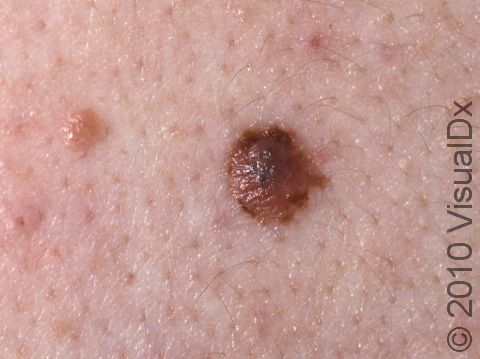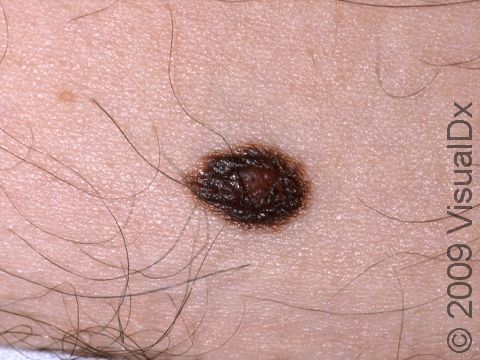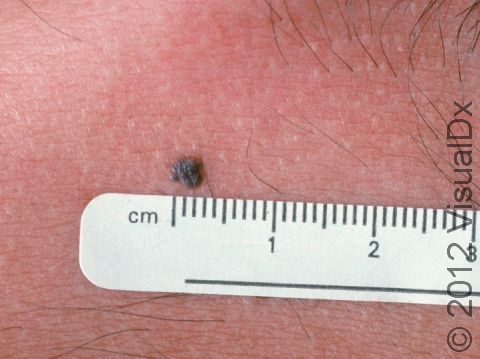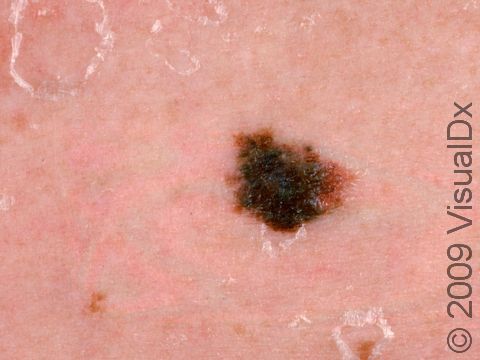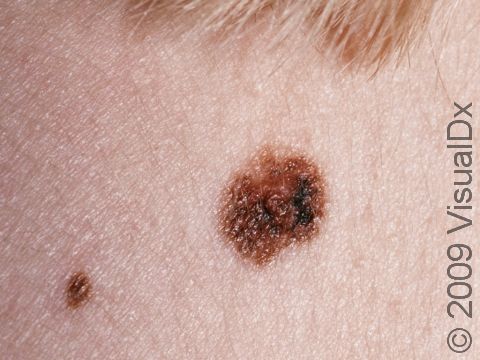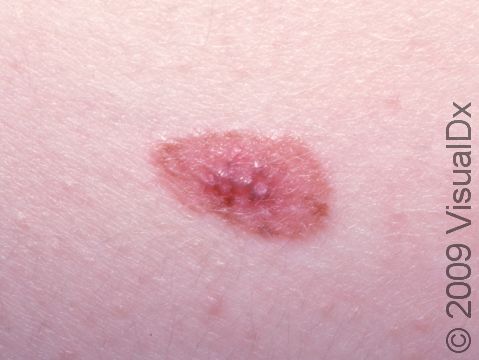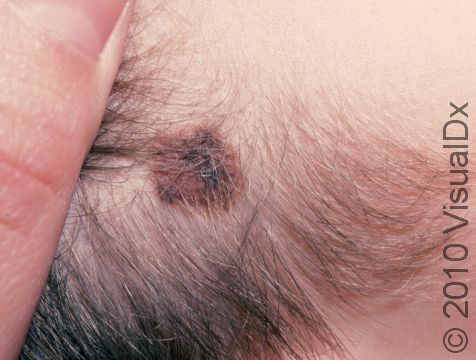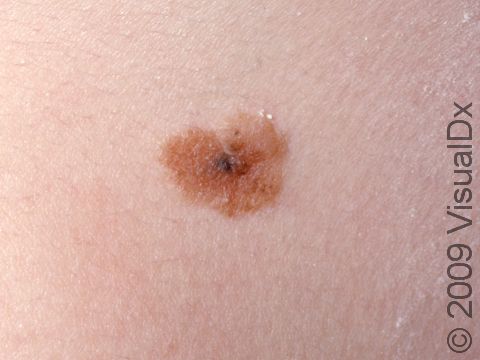Mole, Atypical (Atypical Nevus)
A nevus is commonly called a mole. Moles (nevi, the plural of nevus) in which the skin cells are growing unusually are called atypical, or dysplastic, nevi. These moles may be noncancerous (benign) but may be considered one step closer to being cancerous (malignant) than a typical mole. All moles are made up of collections of the pigment-producing cells of the skin; they may be flat, raised, skin-colored, or pinker or darker than the skin. Atypical moles are characterized by having abnormal cell growth, but this is not always obvious from looking at the mole, and a doctor may have to biopsy the mole and look at a portion of it under a microscope to make this diagnosis. It is important to show all your moles (particularly those that are new or rapidly changing) to your doctor because these atypical nevi are sometimes considered an early form of cancer.
Who's At Risk?
Anyone can develop atypical moles. In general, moles are more common and also more noticeable in lighter-skinned people. Those with a family history and those with a lot of sun or tanning bed exposure are at increased risk of developing atypical moles.
Signs & Symptoms
- Atypical moles may appear anywhere on the skin. The lesions can vary in size and/or color.
- They can be larger than a pencil eraser (6 mm) and may have variations in color within the lesion ranging from pink to reddish-brown to dark brown.
- Atypical moles may be darker brown in the center or on the edges (periphery).
- People with atypical-nevus syndrome may have hundreds of moles of varying sizes and colors.
Self-Care Guidelines
- Protective measures, such as avoiding skin exposure to sunlight during peak sun hours (10 AM to 3 PM), wearing protective clothing, and applying high-SPF sunscreen, are essential for reducing exposure to harmful ultraviolet (UV) light.
- Monthly self-examination of the skin is helpful to detect new lesions or changes in existing lesions.
- Be sure your atypical moles are not signs of skin cancer (melanoma). Remember the ABCDEs of melanoma lesions:
A – Asymmetry: One half of the lesion does not mirror the other half.
B – Border: The borders are irregular or vague (indistinct).
C – Color: More than one color may be noted within the mole.
D – Diameter: Size greater than 6 mm (roughly the size of a pencil eraser) may be concerning.
E – Evolving: Notable changes in the lesion over time are suspicious signs for skin cancer.
Treatments
- Biopsy or surgical removal (excision) may be done so the mole may be examined by a specialist (pathologist) to determine the actual diagnosis.
- As noted previously, people with multiple moles and atypical moles should be followed regularly by a dermatologist. Whole-body photography or photographs of individual moles may be helpful in following these people.
Visit Urgency
- The occurrence of a new mole (pigmented nevus) in an adult is unusual; if a new pigmented lesion occurs, see your doctor for evaluation.
- People with multiple moles and unusual (atypical) moles should be examined by a dermatologist every 4–12 months depending on their past history and family history.
- It may be difficult to tell an atypical mole from a normal mole, so seek medical evaluation if you are unsure about the nature of a mole or if you note changes within a mole.
- Your doctor may recommend that you have a biopsy or surgical removal (excision) of unusual-appearing moles to find out whether or not you have atypical moles or melanoma.
References
Bolognia, Jean L., ed. Dermatology, pp.17, 1770. New York: Mosby, 2003.
Last modified on August 16th, 2022 at 2:45 pm

Not sure what to look for?
Try our new Rash and Skin Condition Finder
